Spotlight : Newsletters
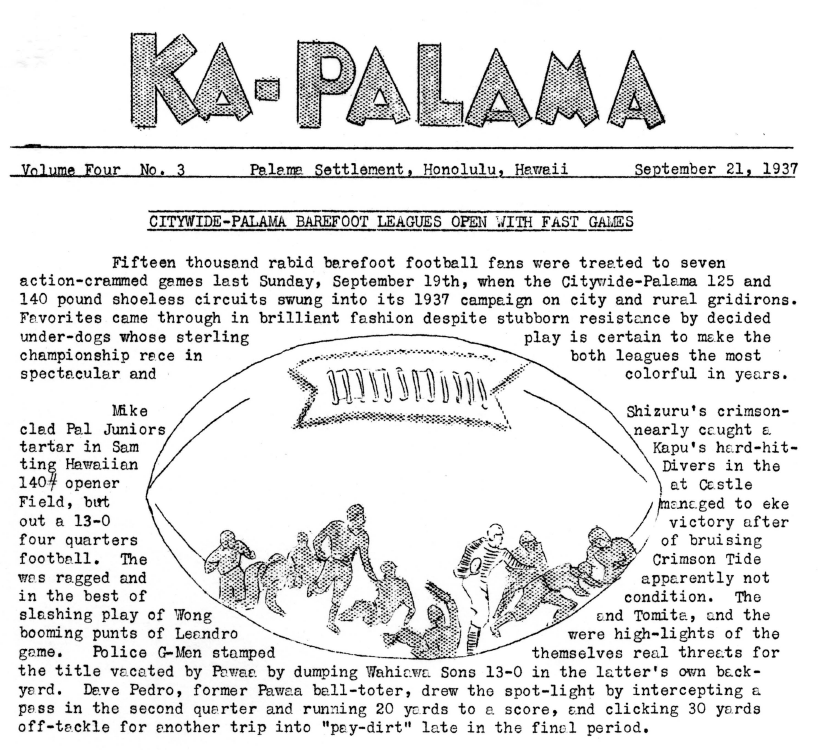
Prior to his tenure as associate sports editor of the Honolulu Star-Bulletin, Bill Gee edited Ka-Palama, a weekly newsletter that covered current events, creative writing submissions, and boys’ and girls’ department news. These newsletters included details not found in the annual reports, such as recaps and announcements of sports events, staff or program changes, excursions, parties, performing arts shows, and more. The voices of participants were publicly expressed through creative writing pieces, including short stories and poetry.
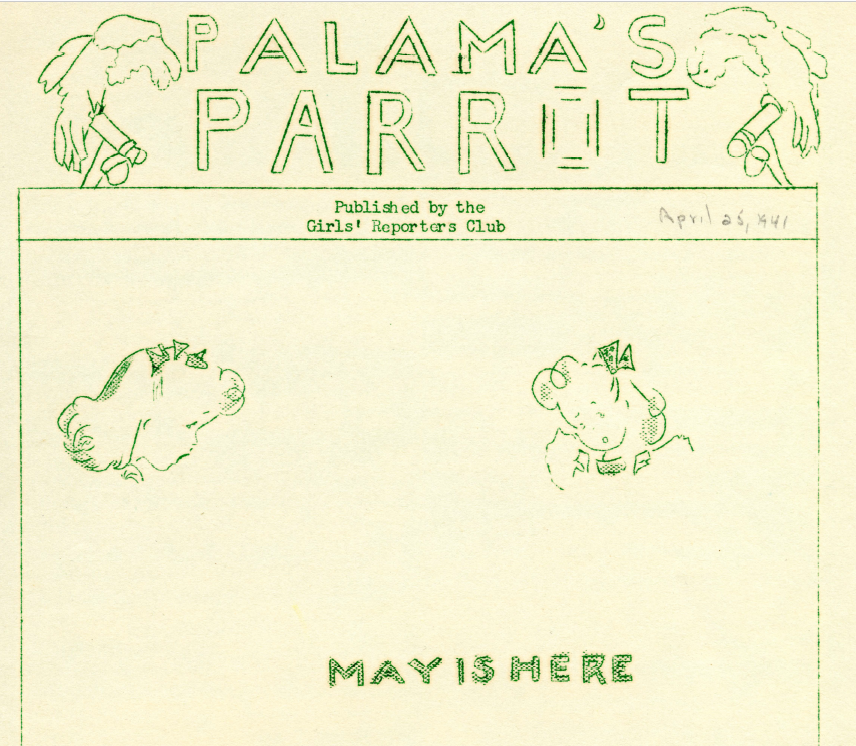
Palama's Parrot (1940-1941) brings to life the Girls Club at Palama Settlement, showing how youth clubs added sparkle to everyday life in Hawai'i despite global tensions from World War II. Through kickball games, picnics, holiday parties, and craft and cooking adventures, groups like the Merrymakers, Cinderellas, Mariposas, and Twilight Juniors mixed friendship with fun while learning leadership, teamwork, and cultural traditions. For young women in Kalihi-Pālama, these clubs offered lively social gatherings and skill-building experiences, reflecting Palama Settlement’s role as a hub of community, creativity, and connection amid a rapidly changing world.
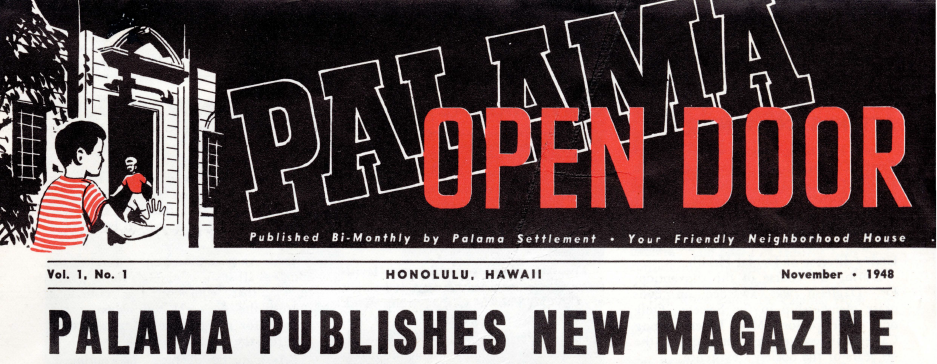
Open Door (1948-1952) launched after the war to keep members, families, and friends connected to the Settlement’s busy life. Named for both its iconic front door and its welcoming spirit, the bulletin highlighted Palama’s wide array of programs—classes, clubs, athletic leagues, music recitals, and social events—open to all ages, races, and backgrounds. Palama helped normalize life in Kalihi-Pālama by reinstating popular programs for youth and adults alike. Sports leagues, summer camps, Explorer Scouts, and holiday celebrations welcomed returning members and an influx of new residents, reinforcing community bonds and offering opportunities for fun, skill-building, and friendship across the neighborhood.
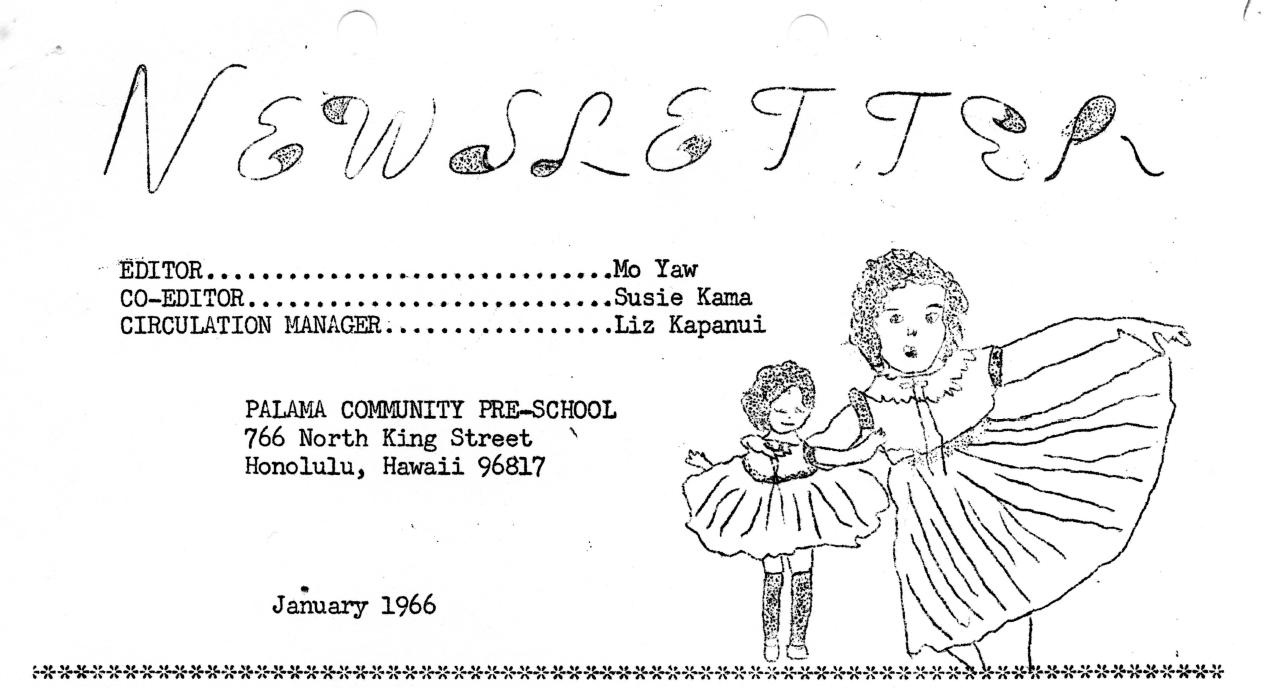
The Palama Community Pre-school newsletter (1965-1967) was a community-driven effort by preschool parents to share news, updates, and ideas for improvement. This newsletter welcomed community input and news submissions. Children’s classroom activities—from art and play to outdoor games—highlighted growth in learning and social skills. Updates on health, tutoring, and upcoming events kept families informed. Packed with anecdotes, achievements, and ways to get involved, the newsletter reflected a vibrant, connected community dedicated to nurturing children’s education and well-being.
The Palama Settlement Moʻolelo (1979) recapped events at or of concern to Palama Settlement from the administration's point of view. Notable events included the opening of Corbett House, Hawaiʻi’s first crisis residence for juvenile status offenders; the launch of a CETA-funded vocational education program; restoration of the fire-damaged Learning Center; and the reestablishment of Settlement-operated gym programs.
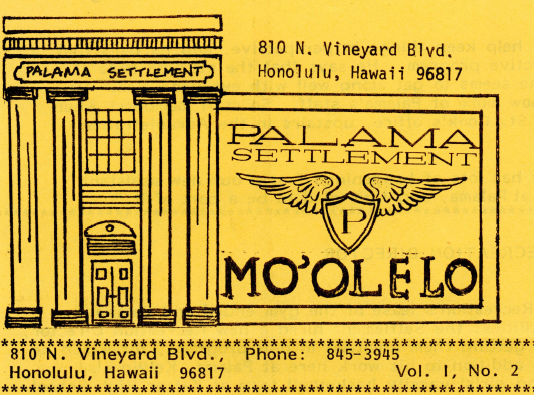
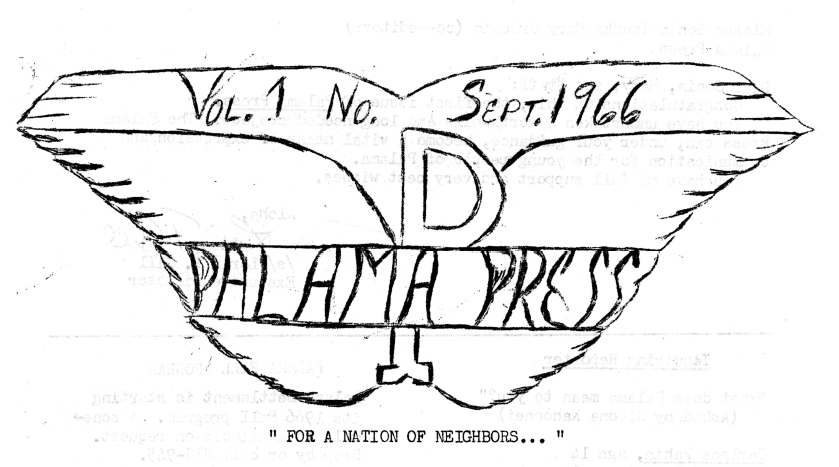
The youth-run Palama Press (1966-1967, 1976) fostered a “nation of neighbors” in the Kalihi-Pālama community through youth-focused programs that encouraged participation, cooperation, and family support. Youth clubs like the Malamalama Service Club, Gentrys, Kingsmen, and Surfanys offered service projects, outings, and social events, while study halls, music lessons, and sports and camp programs developed skills and teamwork. Seasonal activities, such as hayrides and dances, create fun, memorable experiences, even amid unexpected challenges. Renovations to spaces like the Teen Lounge, new equipment, and inclusive sports leagues reflect Palama’s ongoing commitment to community enrichment.

The youth-focused Palama News (1962) informed club members of events, highlighted achievements like swim meets and basketball victories, and celebrated standout achievements of teens. The newsletter reported youth participating in skill-building activities like the Teen Employment Service’s Service Station training, seasonal camps at Palama Uka, and workshops for assistant leaders. Clubs organized dances, sports tournaments, hiking trips, and creative activities, while fundraising and service projects taught responsibility and teamwork.
The newsletter for the In-Community Treatment Program was created by participants as a way to express their candid thoughts—not only about the program, but also about their community and their own personal lives. The In-Community Treatment Program provided structured support with guided group interactions (G.G.I.) for at-risk youth working to stay on a positive path and overcome challenges. Students also contributed poetry and illustrations.
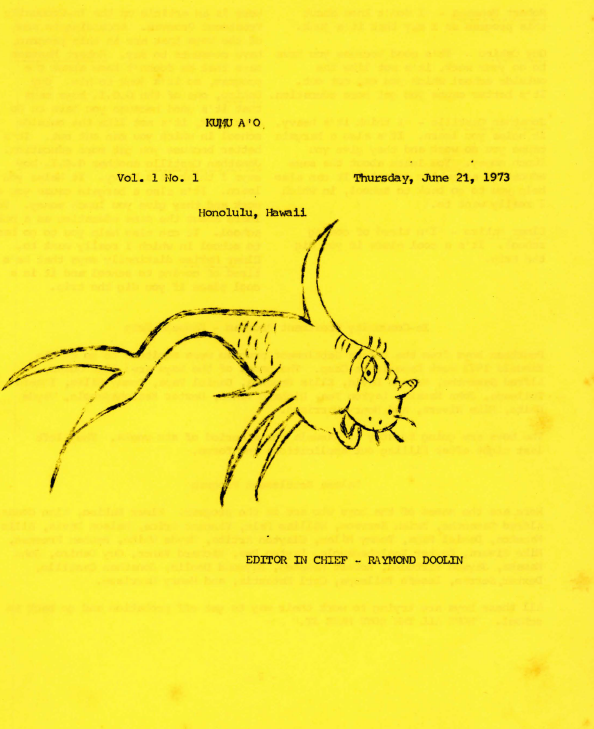
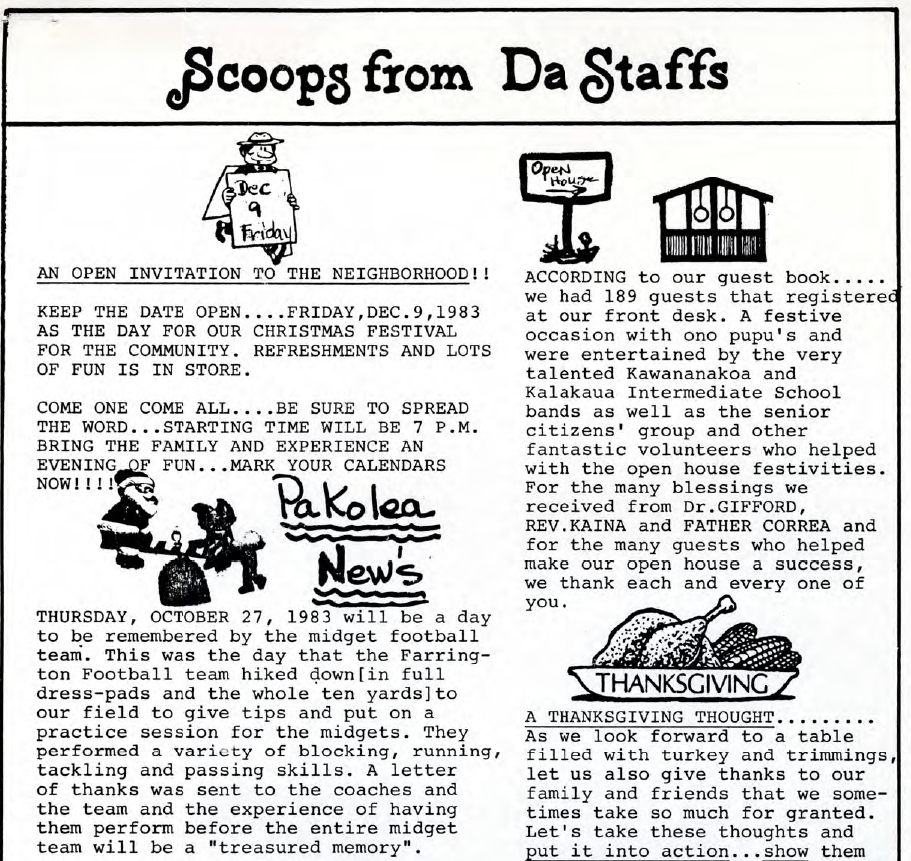
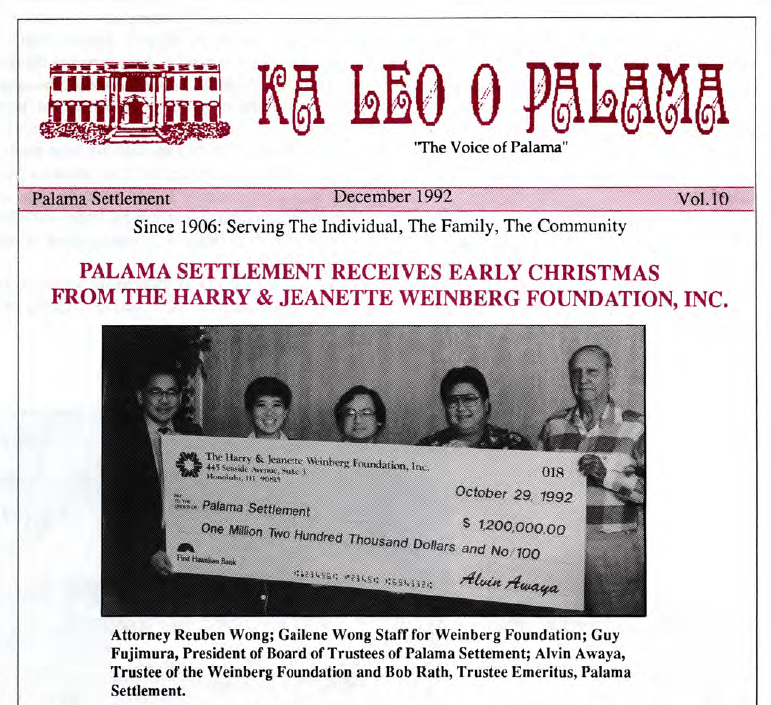
Towards the end of the 20th century, Palama Settlement's newsletters became communication and marketing tools, informing the community about events, volunteer opportunities, and program highlights while promoting Palama’s mission and encouraging participation. Scoops from da Staff (1983-1984, 1988) and Ka Leo O Palama (1989-2013) highlighted program initiatives such as the Computer Center for academic and vocational training, building and gymnasium renovations, and the Pākōlea Players Who Care tutoring initiative.
Annual community events—Easter egg hunts, Halloween Haunted House, Thanksgiving, and Christmas activities—engaged volunteers, schools, and local organizations, fostering community spirit. Fundraising efforts like the Great Aloha Run and the Palama Garage/Rummage Sale supported ongoing programs. Volunteerism remained central, with opportunities across sports, academics, recreation, and mentorship, highlighting Palama Settlement’s ongoing commitment to youth development and neighborhood enrichment.